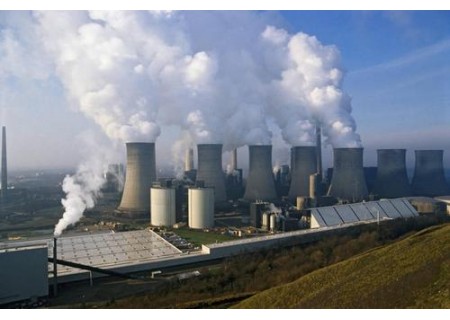What is an iot sensor?

Sensor is a detection device that can feel the measured information, and can transform the felt information into electrical signals or other required forms of information output according to certain laws, in order to meet the requirements of information transmission, processing, storage, display, recording and control.
The national standard GB7665-87 on the sensor is defined as: "can feel the prescribed measurement and in accordance with certain laws (mathematical function law) converted into a usable signal device or device, usually by the sensitive components and conversion components.
China Internet of Things School and Enterprise Alliance believes that the existence and development of sensors, so that the object has a sense of touch, taste and smell and other senses, so that the object slowly become alive.
What is an IoT sensor?
A sensor is a physical device or a biological organ that detects and collects information about its surroundings and transmits the probed information to other devices or organs. These sensor devices can be electrical, mechanical, magnetic, electro-mechanical, electromagnetic, optical or chemical, etc. Sensors are placed near the place of use or network, and come in various sizes depending on the application; they can be stand-alone components or integrated into other products, such as in an engine, a smart thermostat, a smartwatch, a smartphone; the data collected by the sensors is sent back to a central network for storage and processing. for storage and processing.
Where are the sensors located?
According to the general classification, IoT is structured into three parts: the perception layer, the network layer and the application layer. Among them, the perception layer plays a crucial role as the source of data transmitted by the network layer and the data basis for the calculation of the application layer. The important components that constitute the perception layer are a variety of sensors.
The role of sensors in the Internet of Things
The Internet of Things and sensors are complementary. The biggest role of sensors in the Internet of Things is to obtain information.
In order to obtain information from the outside world, people must use their sensory organs. But people's own sense organs alone, in the study of natural phenomena and laws and production activities in their function is far from enough. In order to adapt to this situation, the need for sensors. Therefore, it can be said that sensors are an extension of the five human senses, also known as the electrical five senses. These sensors are the basis for the operation of the entire IoT system, and it is they that enable the IoT system to transmit its contents to the "brain".
The massive data information in the Internet of Things system comes from the terminal equipment, and the terminal equipment data comes from the sensor, the sensor gives everything "sensory" function, such as humans rely on visual, auditory, olfactory, tactile perception of the surrounding environment, the same object through a variety of sensors can also perceive the surrounding environment. And more accurate than human perception, perception of a wider range. For example, humans can not accurately perceive the specific temperature value of an object through the sense of touch, can not recognize the subtle temperature changes, but the sensor can. It can be said that the sensor is the "language" of communication between objects in the era of "Internet of Everything".
The arrival of the new technological revolution, the world began to enter the information age. In the process of utilizing information, the first thing to be solved is to obtain accurate and reliable information, and the sensor is the main way and means to obtain information in the field of nature and production.
Sensors are the main way and means to obtain information in the field of nature and production. Sensors have a more prominent position in the research of basic disciplines. The development of modern science and technology has entered many new fields: for example, on the macro level, it is necessary to observe the vast universe of thousands of light years; on the micro level, it is necessary to observe the world of particles as small as fm; and on the vertical level, it is necessary to observe the celestial body evolution of hundreds of thousands of years, and the instantaneous reaction of s. In addition, there is also a need to deepen the understanding of matter, which is the first step to obtain accurate and reliable information. In addition, there are also various extreme technological researches that play an important role in deepening the understanding of matter, developing new energy sources and new materials, such as ultra-high temperature, ultra-low temperature, ultra-high pressure, ultra-high vacuum, ultra-strong magnetic field, ultra-weak magnetic field and so on. Obviously, it is impossible to obtain a large amount of information that cannot be directly obtained by human senses without appropriate sensors. Many of the obstacles to basic scientific research, first of all, lies in the object of information acquisition difficulties, and some of the new mechanism and the emergence of high-sensitivity detection sensors, often leading to breakthroughs in the field. The development of sensors is often a precursor to the development of marginalized disciplines.
Sensors have long penetrated such as industrial production, Smart Agriculture, marine exploration, environmental protection, resource investigation, medical diagnosis, bioengineering, and even cultural relics protection, and so on the extremely wide range of fields. It is no exaggeration to say that, from the vastness of space, to the vastness of the ocean, to a variety of complex engineering systems, almost every modernization project, are inseparable from a variety of sensors.











